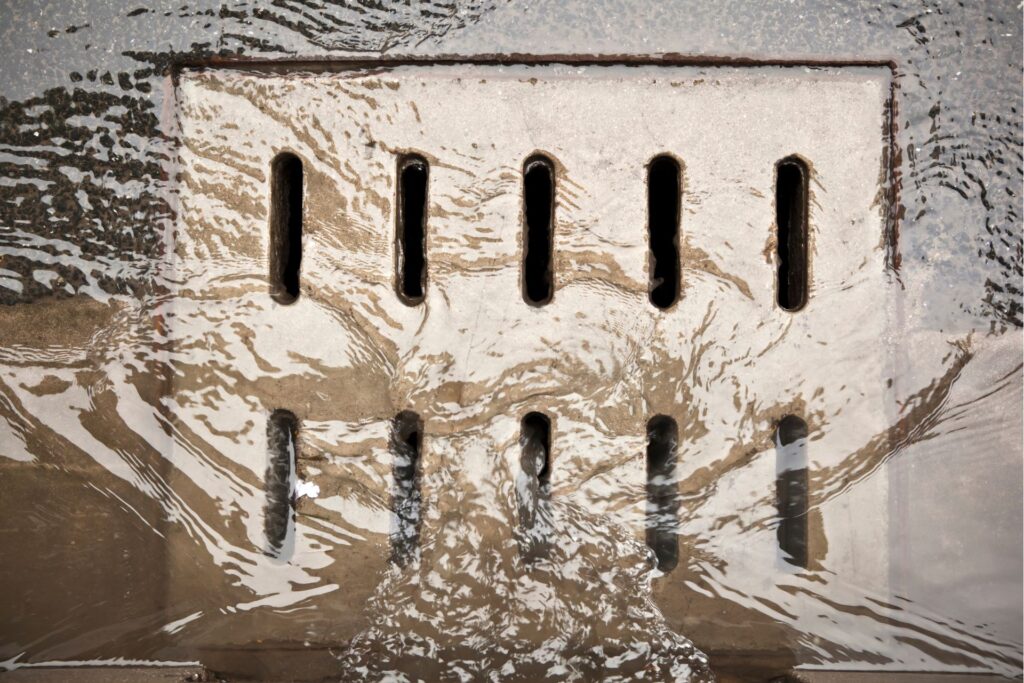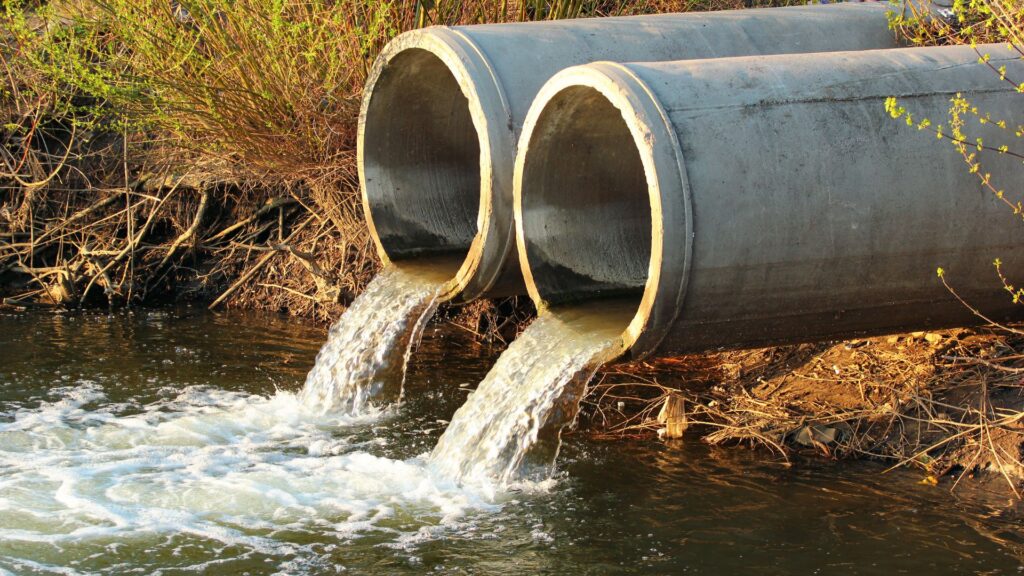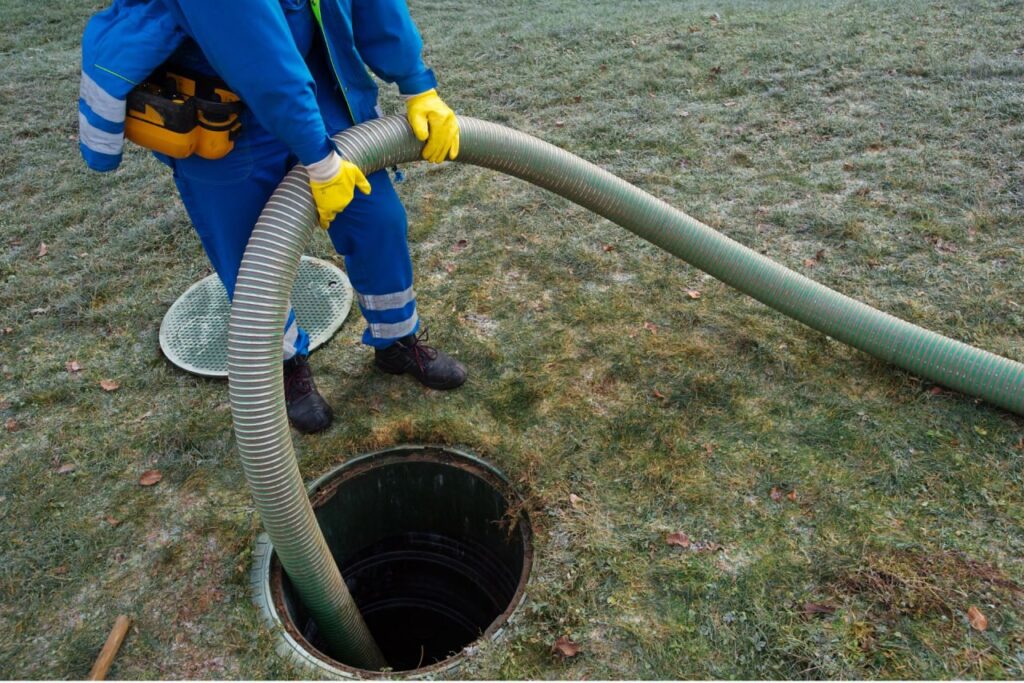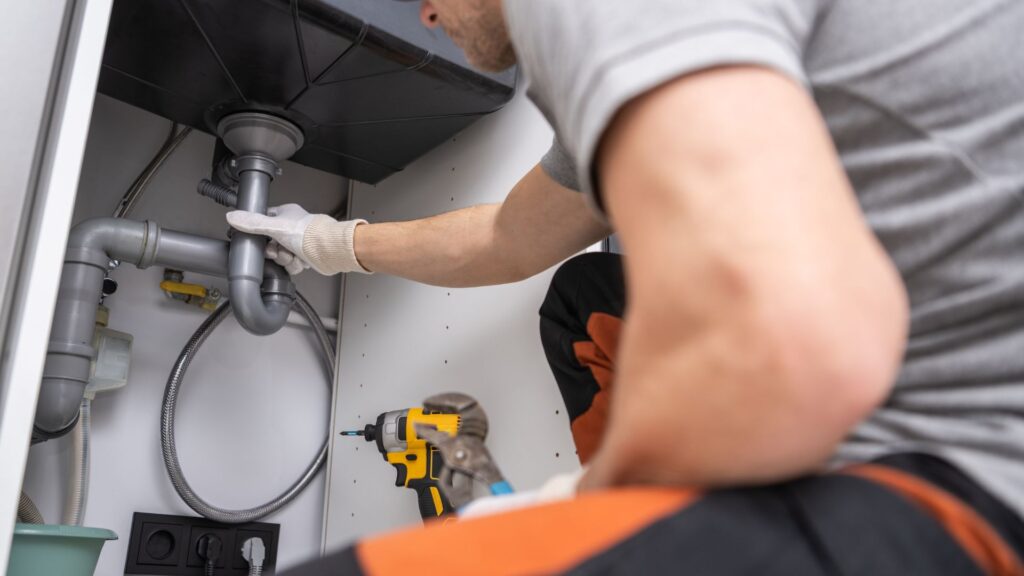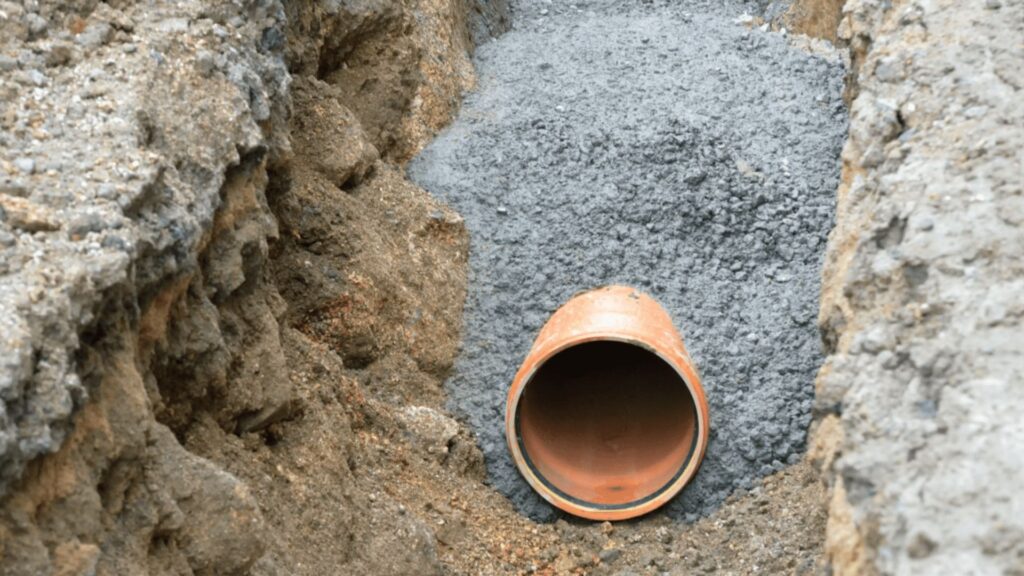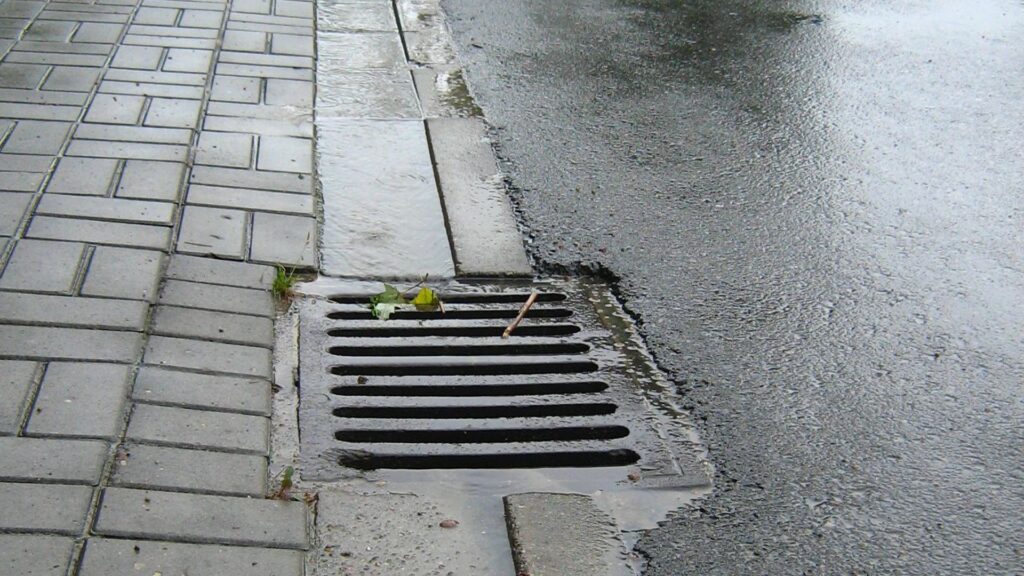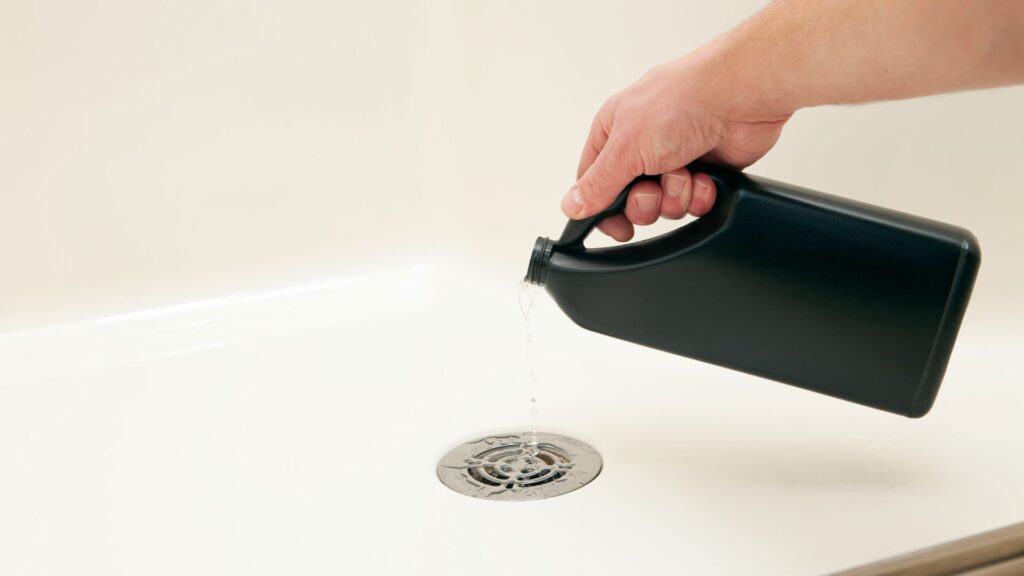Welcome to the ultimate guide to driveway channels in New Zealand. In this comprehensive guide, we’ll delve into everything you need to know about driveway channels, from their importance in preventing water damage and enhancing safety to the different types available and how to choose the right one for your driveway. Whether you’re a homeowner looking to protect your property or simply curious about driveway maintenance, this guide will equip you with all the essential information, practical tips, and expert advice you need to make informed decisions and ensure the longevity and functionality of your driveway.
Driveway channels are drainage systems designed to manage water runoff and prevent flooding or water damage on driveways. In New Zealand, they are essential due to the country’s variable climate and frequent heavy rains. By directing water away from the driveway surface, these channels help maintain the integrity of the driveway, enhance safety by reducing slip hazards, and increase the overall property value. Whether made from plastic, metal, or concrete, selecting the right driveway channel tailored to your needs ensures effective drainage and long-term durability.
- Understanding Driveway Channels
- Benefits Of Installing Driveway Channels
- Types Of Driveway Channels Available In NZ
- Key Considerations When Choosing Driveway Channels
- Step-By-Step Guide To Installing Driveway Channels
- Maintenance And Troubleshooting
- Cost Considerations
- Case Studies And Real-Life Examples
- FAQs: About The Driveway Channels NZ
- Conclusion
- Find A Professional Drainlaying Company Near You!
Understanding Driveway Channels
Definition: What Are Driveway Channels?
Driveway channels, also known as trench drains or channel drains, are narrow drainage systems installed along driveways to manage surface water runoff. These channels are typically embedded into the surface of the driveway and are covered with grates. The primary function of driveway channels is to capture and divert water away from the driveway, preventing pooling and flooding that can lead to damage over time. By efficiently managing water flow, driveway channels help maintain the structural integrity and appearance of the driveway.
Importance: Why Are They Crucial for Driveway Maintenance and Longevity?
Driveway channels play a vital role in maintaining the health and longevity of a driveway. Here are a few key reasons why they are essential:
1. Prevention of Water Damage: Excess water on a driveway can seep into cracks, leading to erosion and structural damage. Driveway channels effectively channel water away from these vulnerable areas, preventing costly repairs.
2. Safety: Water accumulation on driveways can create slippery surfaces, posing a hazard to both pedestrians and vehicles. Proper drainage through driveway channels reduces the risk of accidents caused by slippery conditions.
3. Enhanced Durability: By directing water away from the driveway, channels help prevent the weakening of the driveway material, whether it be concrete, asphalt, or pavers. This results in a longer-lasting driveway with fewer maintenance issues.
4. Aesthetic Appeal: Pooling water can lead to unsightly stains and the growth of algae or moss on the driveway. Driveway channels help keep the surface clean and visually appealing by managing water flow effectively.
Types: Brief Overview of the Different Types of Driveway Channels Available
There are several types of driveway channels available, each designed to meet specific needs and preferences. Here’s a brief overview of the most common types:
1. Linear Channel Drains: These are the most common type of driveway channels, featuring a long, narrow trench covered by a grate. They are ideal for driveways with large surface areas and can handle significant water flow.
2. Grated Trench Drains: Similar to linear channels, these drains feature a trench with a removable grate on top. They are versatile and can be customized with different grate designs to match the driveway aesthetics.
3. Permeable Paver Systems: These systems incorporate permeable pavers with built-in channels that allow water to pass through the surface and into an underlying drainage system. They are excellent for environmentally conscious homeowners looking to reduce runoff.
4. Slot Drains: Slot drains are narrow, slit-like channels that are less noticeable than traditional grated systems. They are perfect for driveways where maintaining a sleek appearance is a priority.
5. French Drains: Although not a traditional driveway channel, French drains consist of a perforated pipe buried beneath the driveway, surrounded by gravel. They are effective for areas with heavy rainfall or poor soil drainage.
By understanding the definition, importance, and types of driveway channels, homeowners can make informed decisions about the best drainage solutions for their driveways. Proper installation and maintenance of these channels ensure a durable, safe, and visually appealing driveway for years to come.

Benefits Of Installing Driveway Channels
Preventing Water Damage
One of the primary benefits of installing driveway channels is their ability to prevent water damage. Driveway channels are designed to effectively manage and redirect water runoff, preventing it from pooling on the surface of your driveway. This is particularly important during heavy rains or when snow melts, as excessive water can seep into the ground beneath your driveway, causing erosion and weakening the foundation. Over time, this can lead to cracks, potholes, and other forms of damage that are expensive to repair. By installing driveway channels, you ensure that water is swiftly carried away from your driveway, protecting it from the detrimental effects of water damage and prolonging its lifespan.
Enhancing Safety
Another significant advantage of driveway channels is the enhancement of safety. Water runoff that is not properly managed can create slippery surfaces on your driveway, increasing the risk of slips and falls. This is especially dangerous during the colder months when water can freeze, creating icy patches that are hazardous to both pedestrians and vehicles. Driveway channels help mitigate these risks by efficiently directing water away from the surface, keeping your driveway dry and safe. This is crucial for maintaining a safe environment for your family and visitors, reducing the likelihood of accidents, and ensuring peace of mind.
Increasing Property Value
Proper drainage, facilitated by driveway channels, can also have a positive impact on your property’s value and aesthetics. A well-maintained driveway free of water damage and safety hazards is a valuable asset. Prospective buyers often consider the state of the driveway as an indicator of overall property maintenance. A driveway with effective drainage solutions demonstrates that the property is well-cared for and protected against potential issues. Additionally, the visual appeal of a driveway that remains in good condition, without unsightly cracks or erosion, enhances the overall curb appeal of your home. This can significantly increase your property’s market value, making driveway channels a wise investment for homeowners looking to boost their property’s worth.
In conclusion, installing driveway channels offers multiple benefits, including preventing water damage, enhancing safety, and increasing property value. These channels are a practical solution for managing water runoff, ensuring that your driveway remains in excellent condition and contributes positively to your property’s overall appeal and worth.

Types Of Driveway Channels Available In NZ
Driveway channels are essential for effective water management, ensuring that rainwater and runoff do not damage the driveway or surrounding areas. In New Zealand, several types of driveway channels are popular, each with its advantages and disadvantages. Here’s a comprehensive look at the most common types: plastic, metal, and concrete driveway channels, along with their best use cases and comparative analysis to help you choose the right one for your specific needs.
Plastic Driveway Channels
Pros
- Lightweight: One of the main advantages of plastic driveway channels is their lightweight nature. This makes them easy to handle and install, reducing labor costs.
- Cost-Effective: Plastic channels are generally more affordable compared to metal and concrete options. This makes them an attractive choice for budget-conscious homeowners.
- Corrosion-Resistant: Unlike metal channels, plastic channels do not corrode, which enhances their longevity in wet environments.
- Versatility: Available in various sizes and designs, plastic channels can be used in a wide range of applications.
Cons
- Durability: Plastic channels may not be as durable as metal or concrete ones, especially under heavy loads or in high-traffic areas.
- Aesthetic Limitations: Some homeowners may find plastic channels less visually appealing compared to metal or concrete options.
Best Use Cases
- Residential Driveways: Ideal for homes with moderate vehicle traffic.
- Temporary Installations: Suitable for projects where long-term durability is not a primary concern.
- Budget Projects: Perfect for those looking to save on initial installation costs without compromising on functionality.
Metal Driveway Channels
Pros
- Strength: Metal channels are extremely strong and can withstand heavy loads, making them ideal for high-traffic areas.
- Longevity: With proper maintenance, metal channels can last for many years.
- Aesthetics: Metal channels often have a sleek, modern look that can enhance the appearance of a driveway.
Cons
- Cost: Metal channels are typically more expensive than plastic ones.
- Corrosion: Over time, metal channels may corrode if not properly treated or maintained, especially in coastal areas with high salt content in the air.
- Weight: The heavier weight of metal channels can make installation more labor-intensive.
Best Use Cases
- Commercial Properties: Ideal for areas with heavy vehicle traffic, such as commercial driveways and parking lots.
- Industrial Applications: Suitable for industrial settings where strength and durability are paramount.
- High-End Residential Projects: Great for homeowners looking to invest in a premium, long-lasting solution.
Concrete Driveway Channels
Pros
- Durability: Concrete channels are incredibly durable and can last for decades with minimal maintenance.
- Load-Bearing Capacity: They can handle very heavy loads, making them suitable for all types of traffic.
- Customization: Concrete channels can be customized to match the aesthetic of the surrounding environment.
Cons
- Weight: Concrete channels are very heavy, which can complicate and increase the cost of installation.
- Cost: While they offer longevity, concrete channels are often more expensive upfront compared to plastic options.
- Maintenance: Although durable, concrete channels can crack over time and may require occasional repairs.
Best Use Cases
- High-Traffic Areas: Ideal for driveways and roads with heavy vehicle traffic.
- Long-Term Projects: Suitable for long-term installations where initial cost is justified by longevity.
- Custom Aesthetic Projects: Perfect for projects requiring custom shapes, sizes, or finishes to match specific design requirements.
Comparative Analysis: Which Type is Best for Different Scenarios in NZ?
Choosing the right type of driveway channel depends on several factors, including the specific needs of your project, budget, and environmental conditions. Here’s a quick comparative analysis to help you decide:
- Budget-Friendly Projects: If you’re looking to keep costs low and the project is relatively small or temporary, plastic driveway channels are a great choice. They are cost-effective, easy to install, and versatile.
- High-Traffic or Heavy Load Areas: For driveways or commercial properties that experience heavy vehicle traffic, metal driveway channels are recommended due to their strength and durability.
- Long-Term or Custom Projects: When durability and customization are key, concrete driveway channels are the best option. They offer long-term durability and can be tailored to fit the specific aesthetic and functional requirements of your project.
In conclusion, selecting the right driveway channel in New Zealand involves considering factors such as cost, durability, aesthetic preference, and specific use cases. By evaluating the pros and cons of plastic, metal, and concrete channels, you can make an informed decision that ensures effective water management and enhances the longevity and appearance of your driveway.

Key Considerations When Choosing Driveway Channels
When selecting driveway channels, several factors come into play that can significantly influence both functionality and aesthetics. Here, we delve into the essential considerations to help you make an informed decision.
Climate Factors
New Zealand’s unique climate plays a crucial role in your choice of driveway channels. The country experiences a wide range of weather conditions, from heavy rainfall to dry spells, which can affect the durability and performance of drainage systems. In regions with high rainfall, opting for channels with efficient water flow capacity is vital to prevent water pooling and potential damage to your driveway. Conversely, in drier areas, while drainage remains important, the focus might be more on ensuring that any sudden downpour is effectively managed.
Driveway Material Compatibility
The material of your driveway significantly influences the type of channels you should choose. For concrete driveways, robust and durable channels that can integrate seamlessly without causing cracks or shifts are ideal. Asphalt driveways require channels that can handle the slight flexing that asphalt undergoes with temperature changes. Gravel driveways, on the other hand, need channels that can prevent stone displacement while effectively managing water runoff. Ensuring compatibility between the driveway material and the channels will enhance longevity and functionality.
Load-Bearing Capacity
Considering the load-bearing capacity of driveway channels is crucial, especially if your driveway regularly accommodates heavy vehicles. Channels need to withstand not only the weight of the vehicles but also the frequency of traffic. For households with multiple cars or larger vehicles like trucks and SUVs, selecting channels designed to handle higher loads will prevent premature wear and tear, ensuring that the drainage system remains effective and durable over time.
Aesthetic Preferences
While functionality is paramount, the aesthetic appeal of your driveway channels should not be overlooked. The channels should blend seamlessly with the overall look of your home and driveway. Whether you prefer a modern, sleek design or a more traditional appearance, there are various styles and materials available to match your aesthetic preferences. Opting for channels that complement the architecture and landscape of your property can enhance curb appeal while maintaining practical benefits.
In conclusion, choosing the right driveway channels involves a careful balance of functionality and aesthetics. By considering climate factors, material compatibility, load-bearing capacity, and aesthetic preferences, you can ensure that your driveway remains both visually appealing and highly functional. This thoughtful approach not only improves the longevity and performance of your driveway but also enhances the overall value and appearance of your home.

Step-By-Step Guide To Installing Driveway Channels
Planning and Preparation
Before diving into the installation process, it’s crucial to start with thorough planning and preparation. Here’s how you can ensure a smooth and successful installation of driveway channels:
Assessing Your Driveway
- Begin by evaluating your driveway’s layout and identifying areas where water tends to accumulate. Look for slopes and low points that might need better drainage. Understanding the water flow will help you determine the best location for your drainage channels.
- Measure the length and width of your driveway to know how many channels you will need. This will also help you plan the layout of the channels more effectively.
Choosing the Right Type and Size of the Channel
- There are various types of driveway channels available, including plastic, metal, and concrete. Each type has its benefits, so choose one that fits your specific needs and driveway material.
- The size of the channel is equally important. Ensure that the channel you choose can handle the volume of water expected in your area. This is especially important if you live in a region with heavy rainfall.
Installation Process
Once you have planned and prepared, it’s time to move on to the installation process. Here’s a detailed guide to help you install your driveway channels effectively:
Tools and Materials Needed
- You will need a shovel, a level, a hacksaw (if you need to cut the channels to fit), a rubber mallet, and gravel or sand for the base. Also, have ready your chosen driveway channels, end caps, and connectors if required.
- Other materials might include concrete mix for setting the channels and sealant to secure the joints.
Step-by-Step Instructions
1. Mark the Area: Start by marking the exact location where the channels will be installed. Use spray paint or chalk to outline the path.
2. Excavate the Trench: Dig a trench along the marked lines. The trench should be slightly wider than the channels and deep enough to accommodate the channel plus a gravel base.
3. Prepare the Base: Fill the bottom of the trench with a layer of gravel or sand. This helps with leveling and provides a stable base for the channels.
4. Position the Channels: Place the channels into the trench, ensuring they sit level. Use a level to check and adjust as needed.
5. Connect the Channels: If you’re using multiple channel sections, connect them using the provided connectors. Secure end caps to the channels at the ends.
6. Set the Channels in Place: For added stability, you can set the channels in a bed of concrete. Pour concrete around the channels and smooth it out, ensuring the top of the channels remains level with the driveway surface.
7. Cover the Channels: Some channels come with grates or covers. Install these to protect the channels from debris and ensure they remain functional.
Common Mistakes to Avoid
- Incorrect Slope: Ensure the channels are installed with a slight slope towards the drainage exit to facilitate water flow.
- Insufficient Base Preparation: A poorly prepared base can lead to uneven channels and ineffective drainage.
- Not Checking Levels: Regularly check the level of the channels during installation to prevent water pooling.
Post-Installation Tips
After successfully installing your driveway channels, follow these tips to ensure they remain functional and effective:
Ensuring Proper Function
- Immediately test the channels by pouring water to check the flow. This helps to identify any issues with the slope or placement early on.
- Inspect the channels periodically, especially after heavy rain, to ensure they are draining water effectively and are not clogged with debris.
Regular Maintenance Advice
- Cleaning: Regularly clean the channel grates and remove any leaves, dirt, or debris. This prevents blockages that can hinder water flow.
- Inspection: Periodically inspect the channels and the surrounding area for any signs of wear or damage. Address any issues promptly to maintain optimal drainage performance.
- Sealant Checks: If you use sealant for the joints, check them occasionally for any cracks or wear. Reapply sealant as necessary to keep the channels secure and watertight.
By following these detailed steps and tips, you can ensure your driveway channels are installed correctly and remain effective in managing water runoff, protecting your driveway from potential water damage.

Maintenance And Troubleshooting
Regular Maintenance
Keeping your driveway channels clean and functional is crucial for maintaining their longevity and effectiveness. Here are some practical tips to ensure your driveway channels remain in top shape:
1. Clear Debris Regularly: Remove leaves, dirt, and other debris from the channels to prevent blockages. Using a garden hose or a pressure washer can help clear out stubborn dirt.
2. Inspect Periodically: Regularly check the channels for any signs of wear and tear, such as cracks or erosion. Early detection of issues can prevent more significant problems down the line.
3. Trim Nearby Vegetation: Ensure that plants and shrubs near the driveway are trimmed back. Overgrown vegetation can drop leaves and branches into the channels, leading to blockages.
4. Use Proper Cleaning Tools: Utilize appropriate tools like gutter brushes or small trowels to clean out narrow or hard-to-reach areas within the channels.
Common Issues
Despite regular maintenance, driveway channels can still encounter problems. Here are some common issues and how to address them:
Blockages
- Identification: Blockages are often evident when water pools or overflows from the channels.
- Solution: Remove the obstruction using a plumbing snake or a pressure washer. If the blockage is severe, you might need to disassemble part of the channel to clear it thoroughly.
Cracks
- Identification: Look for visible cracks along the surface or edges of the channels.
- Solution: Small cracks can be sealed with a waterproof sealant. For larger cracks, consider using a concrete patching compound to ensure durability.
Erosion and Settling
- Identification: Noticeable dips or uneven sections in the channels indicate erosion or settling.
- Solution: Fill in eroded areas with a mix of gravel and sand to stabilize the base. For settling issues, you might need to lift and re-lay the affected sections.
Rusting or Corrosion (for metal channels)
- Identification: Rust spots or weakened metal sections.
- Solution: Clean the rusted areas with a wire brush and apply a rust-resistant primer and paint to protect against further corrosion.
When to Seek Professional Help
While many maintenance and troubleshooting tasks can be handled independently, certain signs indicate the need for professional assistance:
1. Persistent Blockages: If blockages recur frequently despite your efforts, there may be a more significant underlying issue that requires professional diagnosis and repair.
2. Severe Cracks or Structural Damage: Extensive cracks or structural damage to the channels could compromise their effectiveness and might need professional repair or replacement.
3. Drainage Issues: If your driveway consistently experiences poor drainage, it could indicate a design flaw or a serious blockage within the system that professionals need to address.
4. Erosion Control: Significant erosion around the driveway channels might require professional intervention to stabilize the area and prevent further damage.
5. Professional Inspection: Regular professional inspections can help identify potential issues early on and ensure that your driveway channels remain in optimal condition.
Maintaining your driveway channels not only ensures effective water drainage but also prolongs the life of your driveway, saving you from costly repairs in the future. Regular upkeep, prompt troubleshooting, and knowing when to call in the experts are key to keeping your driveway in pristine condition.

Cost Considerations
When planning any construction or home improvement project, understanding the costs involved is crucial. This section will delve into the various cost considerations you should keep in mind.
Initial Installation Costs
The initial installation costs can vary widely depending on the project. For example, if you’re installing a new deck or retaining wall, you need to account for materials, labor, and any additional equipment required. Materials might include timber, concrete, or composite materials, each with its price range. Labor costs will depend on the complexity of the project and the rates in your local area. Additionally, if heavy machinery is required, this will add to the overall cost. It’s essential to get detailed quotes from multiple contractors to compare prices and ensure you’re getting a fair deal.
Maintenance Costs
Once the installation is complete, ongoing maintenance is another factor to consider. Different materials and structures require varying levels of upkeep. For instance, a timber deck may need regular sealing and staining to protect it from the elements, while composite decking might only require occasional cleaning. Retaining walls, depending on their construction, may need periodic inspections and repairs to ensure stability. Understanding these maintenance needs and their associated costs will help you budget for the long term and keep your investment in good condition.
Cost-Benefit Analysis
Finally, performing a cost-benefit analysis can help you determine whether the initial investment is worth the long-term savings. For example, while composite decking may have a higher upfront cost compared to timber, it often requires less maintenance and lasts longer, potentially saving you money over time. Similarly, investing in a well-constructed retaining wall can prevent costly damage to your property from soil erosion. By weighing the initial costs against the long-term benefits and savings, you can make a more informed decision that aligns with your financial goals.
In conclusion, considering the initial installation costs, ongoing maintenance expenses, and performing a thorough cost-benefit analysis are all essential steps in planning your project. This comprehensive approach will ensure you make a well-informed decision that balances upfront spending with long-term value.

Case Studies And Real-Life Examples
Residential Examples: Success Stories from Homeowners in NZ
In New Zealand, many homeowners have transformed their properties with the addition of effective driveway channels. One notable example is the Smith family from Auckland. Their home, situated on a slope, frequently experienced water pooling at the base of their driveway during heavy rains. After installing a high-quality driveway channel, they noticed a significant reduction in water accumulation, which not only protected their driveway from erosion but also improved the overall aesthetics of their property. The Smiths reported that the driveway channel has become an integral part of their home maintenance, providing them peace of mind during stormy weather.
Another success story comes from the Thompson family in Wellington. Their property had long suffered from muddy patches and uneven surfaces due to inadequate drainage. By integrating a driveway channel into their landscape design, they were able to direct excess water away from problematic areas, creating a more usable and visually appealing outdoor space. The Thompsons highlighted that the project was cost-effective and greatly enhanced their daily living experience.
Commercial Examples: How Businesses Benefit from Driveway Channels
Commercial properties in New Zealand have also reaped significant benefits from installing driveway channels. A prime example is a shopping center in Christchurch, where frequent flooding in the parking area was a major issue. The installation of strategically placed driveway channels resolved the flooding problem, ensuring that customers could access the shops without navigating through puddles. This improvement not only enhanced customer satisfaction but also increased foot traffic, ultimately boosting sales for the businesses within the center.
Similarly, a logistics company in Hamilton faced challenges with water damage to their loading bays. After implementing a series of driveway channels, they observed a marked improvement in water management. The channels effectively redirected water away from critical areas, reducing maintenance costs and minimizing downtime caused by water damage. This investment proved to be highly beneficial, as it improved operational efficiency and protected valuable assets.
Lessons Learned: Key Takeaways from These Real-Life Scenarios
The case studies from both residential and commercial properties in New Zealand highlight several key lessons:
1. Importance of Professional Installation: Whether for homes or businesses, professional installation of driveway channels ensures optimal performance and longevity. Expert installers can accurately assess drainage needs and customize solutions accordingly.
2. Cost-Effectiveness: While the initial investment in driveway channels might seem significant, the long-term benefits, including reduced maintenance costs and enhanced property value, make it a worthwhile expenditure.
3. Enhanced Property Aesthetics and Functionality: Driveway channels not only solve drainage issues but also contribute to the visual appeal and usability of outdoor spaces. For homeowners, this can mean a more attractive and enjoyable living environment. For businesses, it translates to better customer experiences and operational efficiency.
4. Preventative Maintenance: Installing driveway channels is a proactive approach to managing water flow and preventing damage. This foresight can save property owners from costly repairs and disruptions in the future.
5. Customization is Key: Each property has unique drainage requirements. Customizing driveway channels to fit specific needs ensures that water is managed effectively, regardless of the property’s layout or environmental conditions.
By examining these real-life examples, it is evident that driveway channels offer practical and aesthetic benefits, making them a valuable addition to any property. These success stories from New Zealand demonstrate that, with the right approach, effective water management is achievable, leading to improved property conditions and satisfaction for both homeowners and businesses.

FAQs: About The Driveway Channels NZ
Conclusion
Driveway channels play a crucial role in managing water runoff and preventing flooding, ensuring the longevity and durability of your driveway. We covered essential points including the importance of proper drainage, types of driveway channels available, and factors to consider when choosing the right system for your needs. As a final tip, always ensure regular maintenance of your drainage system to avoid blockages and potential damage. If you’re considering installing driveway channels, don’t hesitate to seek professional advice to ensure a seamless and effective installation. Take the first step towards a well-protected driveway today by exploring your options or consulting with an expert.
Find A Professional Drainlaying Company Near You!
- Drain Layers Auckland
- Drain Layers Hastings
- Drain Layers Hawkes Bay
- Drain Layers Kapiti Coast
- Drain Layers Lower Hutt
- Drain Layers Napier
- Drain Layers Porirua
- Drain Layers Rotorua
- Drain Layers Tauranga
- Drain Layers Upper Hutt
- Drain Layers Wellington
- Drain Repairs Auckland
- Drain Repairs Wellington
- Drain Unblockers Auckland
- Drain Unblockers East Auckland
- Drain Unblockers North Shore
- Drain Unblockers South Auckland
- Drain Unblockers West Auckland
- Water Leak Detection Auckland
About the Author:
Mike Veail is a recognized digital marketing expert with over 6 years of experience in helping tradespeople and small businesses thrive online. A former quantity surveyor, Mike combines deep industry knowledge with hands-on expertise in SEO and Google Ads. His marketing strategies are tailored to the specific needs of the trades sector, helping businesses increase visibility and generate more leads through proven, ethical methods.
Mike has successfully partnered with numerous companies, establishing a track record of delivering measurable results. His work has been featured across various platforms that showcase his expertise in lead generation and online marketing for the trades sector.
Learn more about Mike's experience and services at https://theleadguy.online or follow him on social media:


